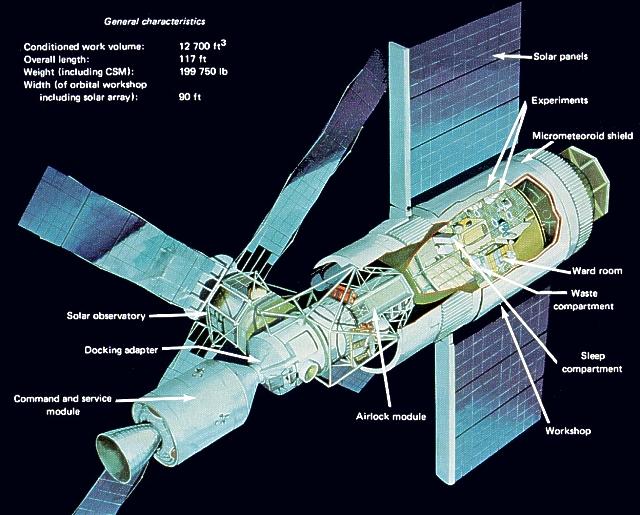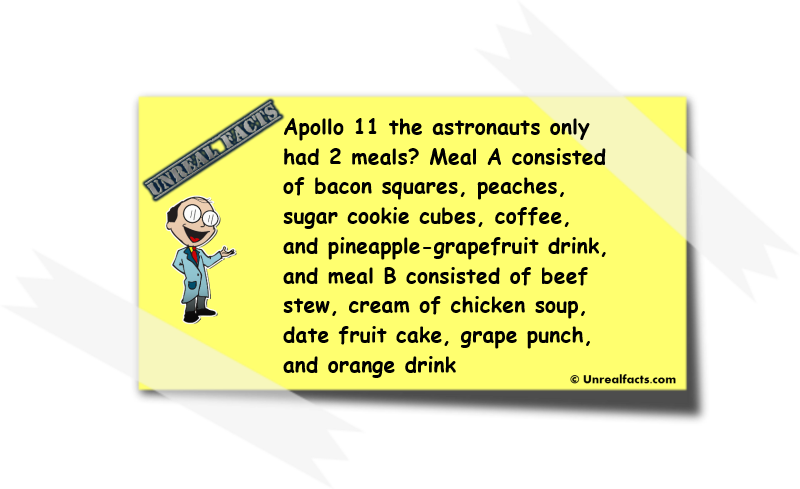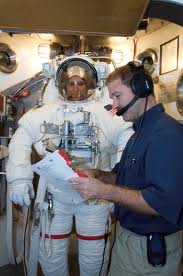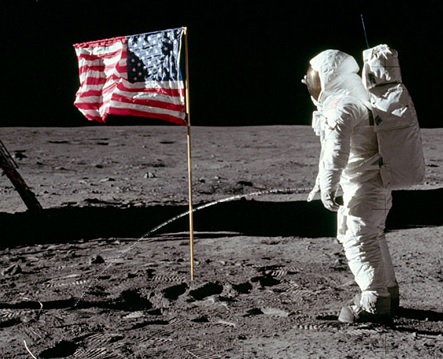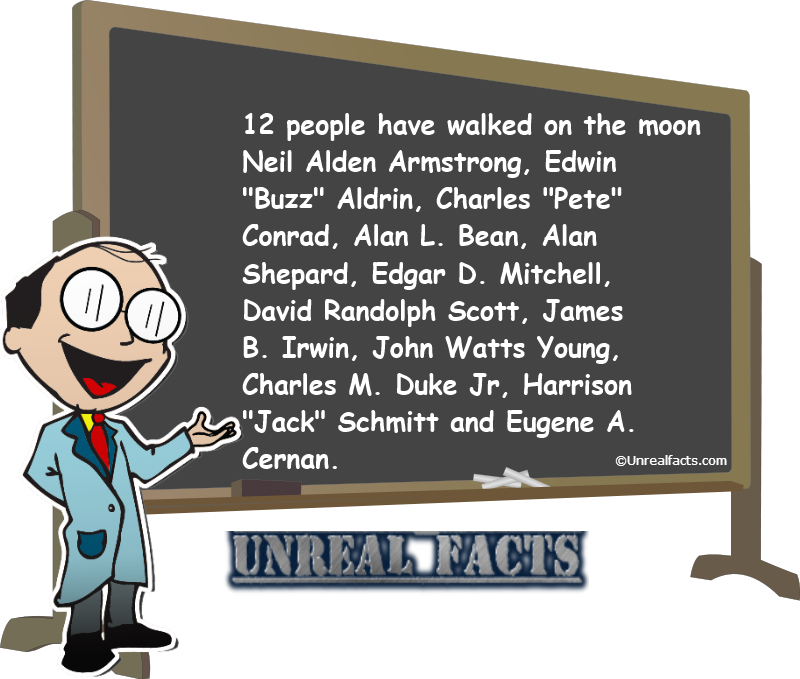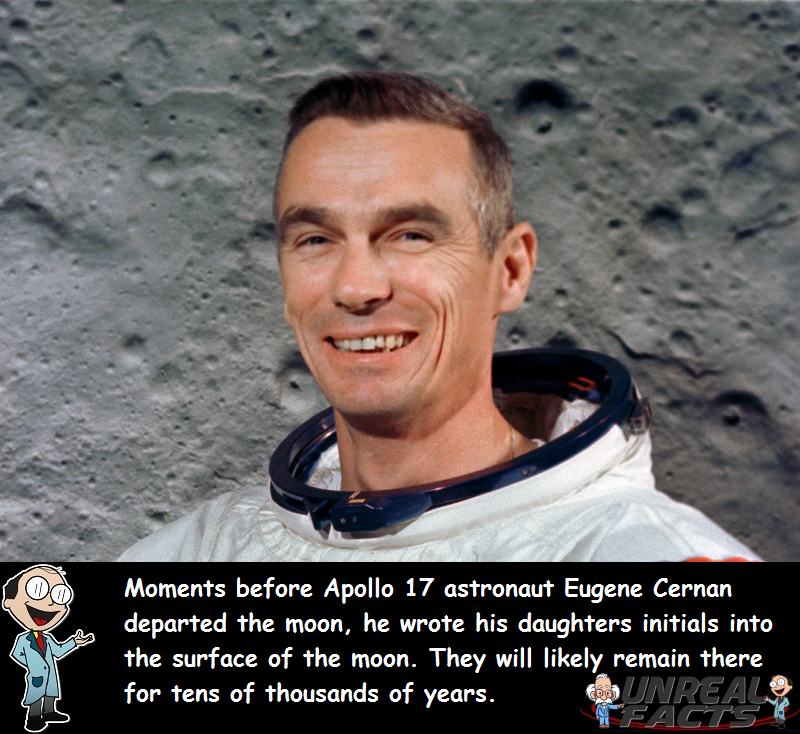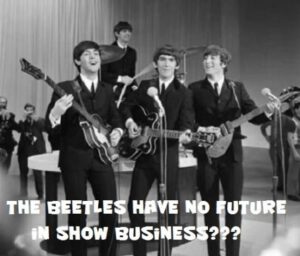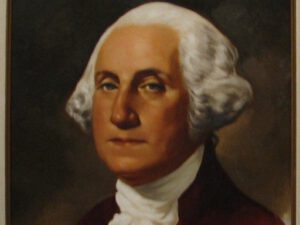6 amazing and mind blowing astronaut facts, and facts about NASA in space. From the crazy to the brilliant, these cool facts will be with you every time you gaze up at the stars. Now set forth and enjoy these NASA and astronaut facts.
1 NASA Had A Peanuts Space Station
Do we have any fans or former fans of the Peanuts comic strip among us here today? That’s great. But even if you were never a fan of the comic strip and cartoon series boy do we have some news for you. Did you know that there was a Peanuts NASA space station? Well, not exactly a space station, but it certainly was a space module with human occupants, so it kind of was a space station. Despite this, there really was a Peanuts NASA space station, and who would have ever thought that the geeks at NASA would name a space station after a couple of comic book characters?
We all know, or probably should know, that Peanuts is a comic book featuring two main characters. They are Charlie Brown and Snoopy, a beagle. The comic strip, and cartoon series is the most successful comic that has ever gone to print, running for over 50 years. Although the series originally never had a lead character, over time the creator of the strip began to focus first on Charlie Brown, and then to a lesser extent, Snoopy. In one episode f the strip, they go into space. The Peanuts story is titled “NASA Space Station.” But perhaps they were just revisiting real events.
I bet you never knew a space craft was named after a couple of comic strip characters. Apollo 10’s command module was called Charlie Brown and the lunar module was called Snoopy. Apollo 10 was the dress rehearsal for the next manned space mission, the one that saw Neil Armstrong andBuzz Aldrin walk on the moon. Apollo 10 approached to within 8 miles of the surface of the moon in May 1969. Not only were the command and lunar modules named after Peanuts, the space craft also set the record for the fastest speeds ever for a manned vehicle at 39,897 km/h (11.08 km/s or 24,791 mph).
Another interesting note worth mentioning, Peanuts seems to be en overwhelmingly popular theme at NASA. Not only was there a Peanuts NASA space station, Snoopy is also the astronauts personal safety mascot.

2 Every Day There Are About 15 Sunrises And Sunsets On The Inernational Space Station
Early morning risers would love this fact, probably for the repeated beauty. Astronauts and cosmonauts on the International Space Station are lucky enough to experience 15 sunrises and sunsets every day. Any person who has seen a sunrise, and to lesser extent sunsets, would appreciate the beauty of the occasion. They are one of the most simple and beautiful sights to witness, and come around once a day. But the lucky guys and gals on the ISS experience the wondrous beauty 15 times as often as everyone else.
How do astronauts get to see 15 sunrises and sunsets on the International Space Station in a day?
It kind of sounds impossible doesn’t it? To be able to see around 15 sunrises and sunsets on the International Space Station in a day. But it does happen, and here’s why. The space station is orbiting 354 kilometers (220 miles) above Earth. In other words, a real long way up. But it’s not just sitting in one spot. It’s actually moving around the Earth at an enormous speed. As you may have read in our fact about the speed of a space shuttle, to maintain orbit a speed of about 28,000 km/h must be held, which is the speed the ISS orbits Earth at. This means that it takes only 92 minutes for the International Space Station to complete one orbit of our planet. Because it completes a navigation around Earth so frequently, it means that every 45 minute the astronauts and cosmonauts get to see either a sunrise or a sunset. But don’t think they are like the ones here on Earth. The sunsets are said to be, amazing!
When viewing a sunrise on the international space station it’s said to be nothing but spectacular. It shows the different layers of the Earths atmosphere, from the first dark layer that shows the parts of Earth that are still experiencing night time, to the outer layer of dark blue that fades to the dark black vacuum of space. Between those layers are several others. Just above the first dark layer is the Earth’s troposphere. It’s a deep orange and yellow. This is the layer that the clouds are in. Above that is the stratosphere. It’s said to be pink to white and above the clouds. This pink band turns slowly to a light blue band. The stratosphere is generally where you will find most of the worlds airlines flying.
But there’s also another difference about the sunrises on the International Space Station. Essentially, blink and you will miss it. Due to the unbelievable speeds that the space station travels at, a sunrise usually lasts mere seconds.
3 How Fast Does A Space Shuttle Travel
How fast does a space shuttle travel? Very fast! It’s so fast in fact, that the actual speeds will astound most people, even those who have a thrill for speed.
It’s probably a thought that very few of us have ever really pondered. How fast does a space shuttle travel? It’s one of those useless pieces of trivia that we will often think of, and once the question enters our mind, it’s something that we must find an answer to. Well prepare to be set back into your seat, because it’s not only the very fast speeds that will surprise you. The acceleration will likely knock your socks off. These speeds are simply amazing, and are nearly equal to the speeds of deep space satellites.
How fast space does a shuttle travel?
The Space Shuttle speed goes from 0 km/h to 28,163 km/h (0 mph to 17,500 mph) in 8.5 minutes. If you think that’s a bit of an eye popping experience, after only 2 minutes it is traveling at 5,500 km/h (3,438 mph) and accelerating rapidly. So why does a space shuttle have to go so fast?
The simple answer is gravity. While sitting here on Earth we feel gravity all of the time. It actually doesn’t feel that powerful to us, after all, we routinely break the pull of gravity, if only momentarily. Every time a plane takes off for a flight, or when you jump into the air, you are breaching the pull of the Earth. But whatever goes up, must come back down again, unless you are a big rocket. If the space shuttle fails to maintain a speed of about 28,000 km’h, it won’t be able to stay in orbit.
In an effort to break the pull of this planet, rockets designed for space must be able to generate enough thrust to reach space before the Earth pulls it back down again. This requires a lot of energy, which a rocket expels continuously until the space shuttle reaches orbit. But the shuttle doesn’t stop dead still in space once it reaches orbit. It will continue to accelerate, thanks to gravity. It’s this gravitational pull combined with the awesome power of the rockets that allows the space shuttles, when they were in use, to reach the mind blowing speed of 28,163 km/h.
4 NASA Had To Relabel The Urination Sleeve’s Because They Kept Falling Off
Urination is something that we all take for granted. It’s relatively simple and straight forward, as it’s something that we are instinctively programmed to do and ultimately have limited control over. But that simplicity can very simply be turned into an extremely complicated affair once in a weightless environment, such as in space. Clearly NASA had to find a workable solution, and they did. It was device that was very similar to a condom with an opening at the end to allow urine to pass through. But even this solution had one major problem. When it comes to size, men hardly ever own up to the truth, and as you can probably guess, problems arose.
When NASA introduced the wiener sleeve for the space flights, they had three sizes available. They were small, medium and large. Now men being men will never confess to having to use a small one, and being like most men, if given the chance, will go for the large one. And astronauts, superior intelligence aside, are only human, and will make the same mistake all men make. They all chose the large wiener sleeve.
Now as you could imagine, a poorly fitted condom like urination device could pose a significant risk when in space. NASA’s solution to the problem? Simply rename the sizes to large, gigantic and humongous. Guess what? You wouldn’t believe it, but the problem was solved.
5 NASA Fined For Littering With Space Junk
When the US space station Skylab crashed to Earth the Australian local government area of Esperance, in Western Australia, fined the US government $400 for littering. What nerve, right? But it wasn’t really worth the effort.
The fine went unpaid for 30 years. It was finally paid in 2009 after Scott Barley, of Highway Radio, heard about the incident. He took it upon himself to raised the funds through his morning show listeners and paid the fine on behalf of NASA.
6 How Do Astronauts Scratch Their Noses?

No, we’re not being stupid with a question like that. It’s a genuine question. Of course, when they are inside the space shuttles they would just use their hands, but what about when they aren’t inside the space shuttle? It’s a whole new ball game, and we all know just how distracting an itchy nose can be.
Imagine this. You are an astronaut in space, out on a space walk or walking on the moon with your spacesuit on, and you get an itchy nose. It could not be a worse situation to be in, could it? Let’s face it. The only time you will ever get an itchy nose is when it is impossible to scratch it. So what do the astronauts do it those situations? Do they just continue on and try to ignore the itch? No, they don’t.
This might surprise you, but the people at NASA seem to have thought of everything. What the bright sparks in the engineering department of NASA have done is they have placed a small piece of Velcro inside the helmet so astronauts can scratch their noses when itchy. Pretty clever if you ask me, and one thing that I have since done with my motorcycle helmet.
[brid video=”4228″ player=”866″ title=”undefined”]
7 Space Food for Apollo 11 Astronauts
If you’re ever chosen to become an astronaut, one thing that you will undoubtedly have to contend with, apart from a weightless environment, is space food. Gee, even the name space food sounds futuristic and out of this world. But it isn’t out of this world and it’s definitely not futuristic. In fact, space food is relatively dull and boring. I suppose it’s a good thing for the astronauts that they have a great view.
If you’re like most people, you not only need variety in your diet, you also crave it. It’s one of life’s little pleasures. To be able to tease the taste buds with a new flavor at each meal. Not only is it a pleasure to eat food with a great variety of flavors, it’s also fun to create the different meals. It’s one of the reasons that cooking shows are so popular on television. But for several reasons, space food doesn’t have the same luxuries that regular Earth based food does.
Boring old space food
This would become boring due to the complete lack of variety. Did you know during Apollo 11 the astronauts only had 2 meals? Meal A consisted of bacon squares, peaches, sugar cookie cubes, coffee, and pineapple-grapefruit drink, and meal B consisted of beef stew, cream of chicken soup, date fruit cake, grape punch, and orange drink. While the meals would have been nourishing, and possibly tasty, I could image becoming bored with the same old food day in and day out. Not only would the taste and variety have been oh so so, the texture would have been ordinary. All space food has been processed to death and is a paste like substance. It is like this to prevent crumbs and other small items entering sensitive equipment and causing a malfunction of said equipment. It kind of makes sense doesn’t it.
So although the meals of space food were lacking in originality, the lucky astronauts on board Apollo 11 were accomplishing something very special, and the food would have been far from their thoughts.
8 Space Suit Facts – Learn Something New And Amazing
Get ready for some amazing space suit facts.
It should come as no surprise that astronauts need to wear space suits when in space. We all know what they look like, but what else do we know about them? Well, for something that at first seems plain and simple, the more you discover the more you want to learn about them.
First of all, they are heavy. Real heavy. The space suite weighs about 127 kg (280 pounds). But when in space, just like the astronauts, they are weightless.
They aren’t easy to put on either. The suits take about 45 minutes to put on including the special underwear. Yeah, you can’t use regular underwear with this kind of suit. The underwear includes a special urination device. After all, they couldn’t really remove the suit to take a bathroom break, even when on the moon. But that doesn’t mean that they didn’t pee on it, someone had to become the first to pee on the moon.
While on Earth it is difficult and clumsy to move around in, but once in a weightless environment the weight is not an issue. The difficult maneuvering is still a problem for the astronauts however, due to their bulky design.
So why are they like they are?
In writing and gathering information about space suit facts we had to find out why they are designed the way they are. In short, it has to do with air pressure and the ability to breath.
The first space suits were designed about 80 years ago, not for venturing into space, but for high altitude flying. The higher you get, the thinner the air gets. When the air gets thin breathing becomes difficult. A suit that allowed pilots to continue to consume and inhale oxygen allowed them to reach higher and higher.
In the 1950’s and 1960’s, NASA and the Russian Space Agency entered the space race. To go into space they needed a suit that could withstand the vacuum of space. They elaborated on the earlier designed space suits to create something new, and very different to which we have today.
The first space suits were in fact silver, not white. The reason they were silver was because the scientists thought the silver metallic design would better reflect the suns harsh rays while they were in space. They also had holes in them that were attached to hoses that fed cooling water into them. But the problem with these suits was they were fragile.
The suits continued to undergo redesigns. When the Apollo missions really began to reach for the surface of the moon, NASA needed something much more durable. A suit that could withstand the harsh environment of the moon with its terrain. This moon space suit was tougher, included a device to pee into, and had a backpack that contained water, oxygen and a battery that would last 8 hours for a moon walk.
The moon landings weren’t the end of the space suit design. Obviously astronauts need to exit their space shuttles, or other space vehicles for routine maintenance or repairs. To make this task much more easier NASA included 24 small rockets to the suit. How cool is that? A real rocker back pack that you can also fly in space. Awesome! When they’re out working in these suits it’s sometimes called EVA, or Extra Vehicular Activity.
Even today Astronauts wear their common white suits, but only in rare circumstances. When in the Space Station or in a space shuttle they normally wear a pair of overalls, or even their normal clothes.
9 The First Person To Pee On The Moon Was Buzz Aldrin
The first person to pee on the moon was none other than Buzz Aldrin, the second man to walk on the moon. We’re not saying that he literally flopped it and peed on the surface, but he was the first to answer natures call. And if you know anything about space suits, he became the first to do two things on the moon, accomplishing both feats simultaneously.
The space suits that astronauts wear have a contraption built in to collect urine, which also had a rather humerus journey that you can read here. This device actually serves several purposes. Two of the main ones being to adequately contain the pee, and the other to accommodate an easier bathroom break. So technically, Buzz Aldrin was not only the first person to pee on the moon, he was also the first to wet his pants on the moon. But that is a little more awkward, isn’t it?
Being the second set of feet on the moon is without a doubt a magnificent accomplishment, and one that may have been in his blood as his mothers maiden name was Moon. He departed the Lunar Lander 15 minutes after Neil Armstrong and was in awe at what he saw. He even described the “magnificent desolation” of the lunar surface, which itself is a memorable quote.
While Aldrin will always be remembered as the second person to walk on the moon, he will always hold the mantel of being the first person to pee on the moon.
10 How Many People Have Walked On the Moon?
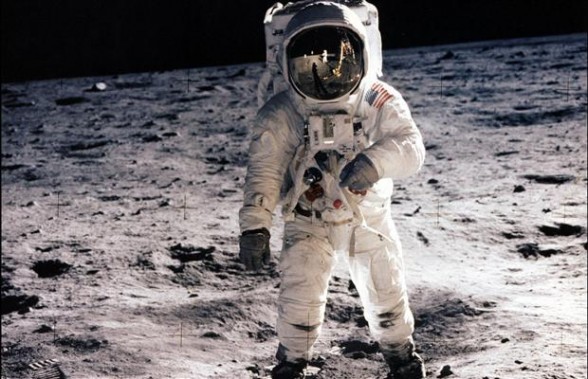
In the 45 plus years since man first landed on the moon, have you ever wondered how many people have walked on the moon? It’s probably not as many as you think.
Everyone who was old enough to remember the special day in 1969, when a few men, the crew of Apollo 11, landed on the moon, will recall where they were and what they were doing. It was one of the rare moments in human history where the entire world stopped, all at once, focused on a moment that would forever change the history of the human race. It was a truly inspirational moment for humanity. At no other point in time have we ventured beyond the soil of our own planet onto another. The world was forever changed. But the special moment wasn’t going to last. It seems we humans have a short attention span.
Now what was it we were talking about? Oh, that’s right. How many people have walked on the moon. I momentarily lost my train of thought. While the speech by JFK inspired man to reach for the moon by the end of the 1960, the long held dream soon faded once the mission was accomplished. An adoring public soon became bored with the notion with rocket launches and moon landings. It was fast becoming like your once favorite television show broadcasting reruns over and over again. People became bored with the once final frontier. This is the reason not as many people have walked on the moon as you would think. With a declining interest in the general populace, funding for expensive ventures to the moon soon ran dry.
So how many people walked on the moon?
Surprisingly, only 12 men have walked on the moon, two for each of the 6 successful missions there. They were Neil Alden Armstrong, Edwin “Buzz” Aldrin, Charles “Pete” Conrad, Alan L. Bean, Alan Shepard, Edgar D. Mitchell, David Randolph Scott, James B. Irwin, John Watts Young, Charles M. Duke Jr, Harrison “Jack” Schmitt and Eugene A. Cernan.
You may also enjoy reading:
- How to become an astronaut
- Space suit facts
- What did the Apollo astronauts do for life insurance
- The first person to pee on the moon
11 Astronaut Eugene Cernan Wrote His Daughters Initials On The Moon
Today it’s becoming a common occurrence to see parents online who have gone that little extra mile for their children. Classic examples are fathers who will go shopping dressed up as a superhero with their kids, or the ones that will give an extravagant present, usually while being filmed or photographed. They have a tendency of making all other parents look, well, ordinary in comparison. But one man can lay a claim that trumps all before and since. Astronaut Eugene Cernan wrote his daughters initials on the moon, literally on the surface of the moon.
Eugene Cernan is often best remembered as the last man to walk on the moon. He was part of the Apollo 10 and Apollo 17 missions. Apollo 10, which launched on May 18, 1969, was the dress rehearsal for the main event that saw Neil Armstrong and Buzz Aldrin become the first two men to place their feet on another stellar object later that year. The disappointment at being part of the practice run and not the real thing must have been agonizing, but he didn’t have to wait long for his opportunity, and he made it count.
So you probably would have thought that with the disaster of Apollo 13 NASA would have abandoned the moon missions altogether. But thankfully they didn’t. Although public interest was now waning in space exploration, it was still a hot topic for astronauts. NASA continued to send men to the moon until 1972 with Apollo 17, and this is where Eugene Cernan writing his daughters initials on the moon comes in.
After completing the core function of the Apollo 17 mission, just prior to leaving the surface, Eugene Cernan dropped to one knee and wrote his daughters initials on the moon with one finger. The initials were “TDC.” But that isn’t the end of the story. It’s possible that some of you may have heard that he wrote his daughters name into the moon, and we have another astronaut to thank for the confusion.
A few years after he etched his daughters initials into the surface of the moon, where they should remain for quite a long time, Cernan met up and spent a little time with fellow astronaut and moonwalker, Alan Bean. Bean had turned his talents from literal moonwalking to painting, and one of the paintings he was working on was of Cernan and the Apollo 17 moon walks.
One of the pieces of art that Bean was working on featured a big old rock that was pretty much a big focal point of the mission. Indeed, Cernan noticed the rock in the painting and lamenting the importance that it had to the history of the mission, regretted not taking a few minutes longer to write his daughters name in that particular rock. This would have rocked, because an etching would last a lot longer than writing in the dust, barring a direct impact from a meteor that is. Inspired by this regretful tale, Bean sought, as best he could, to rectify history.
After a couple of days Bean called Cernan to let him know that he had made an alteration to the painting. The alteration was the addition of the word “Tracey” to the surface of the rock. When asked why he had done it, Bean simply responded that:
…he’d done it to prevent Cernan having to go back and do it himself
This rock became colloquially known as Tracy’s rock.
SOURCES
[aio_button align=”right” animation=”none” color=”gray” size=”large” icon=”none” text=”NEXT PAGE” relationship=”dofollow” url=”https://unrealfacts.com/21-amazing-nasa-astronaut-facts/2/”]





